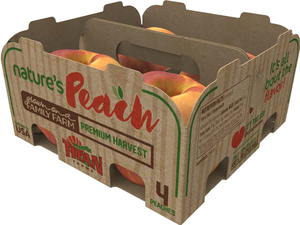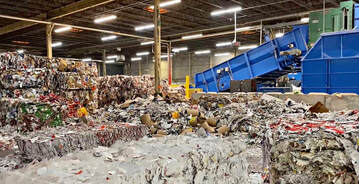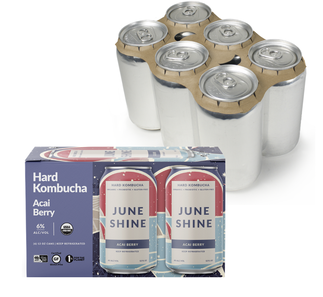A Sustainable Symbiosis
Corporations Change in Response to Consumer Demand
Winter 2021
By Elizabeth Lenhard
By Elizabeth Lenhard
 The Titan Farms peach carrier looks like a charming wood crate but is actually recyclable paperboard. Source: WestRock
The Titan Farms peach carrier looks like a charming wood crate but is actually recyclable paperboard. Source: WestRock
 One of WestRock’s recent innovations is the development of recyclable paperboard gift cards.
Source: WestRock
One of WestRock’s recent innovations is the development of recyclable paperboard gift cards.
Source: WestRock
 Mixed paper at the Muskogee, Oklahoma recycling facility.
Source: Georgia-Pacific
Mixed paper at the Muskogee, Oklahoma recycling facility.
Source: Georgia-Pacific
 Left: JuneShine’s paperboard box packaging replaces plastic six-pack holders. Top: The paperboard CanCollar; one of WestRock’s many new innovations.
Source: WestRock
Left: JuneShine’s paperboard box packaging replaces plastic six-pack holders. Top: The paperboard CanCollar; one of WestRock’s many new innovations.
Source: WestRock
|
Georgia Forestry Magazine is published by HL Strategy, an integrated marketing and communications firm focused on our nation's biggest challenges and opportunities. Learn more at hlstrategy.com
|
